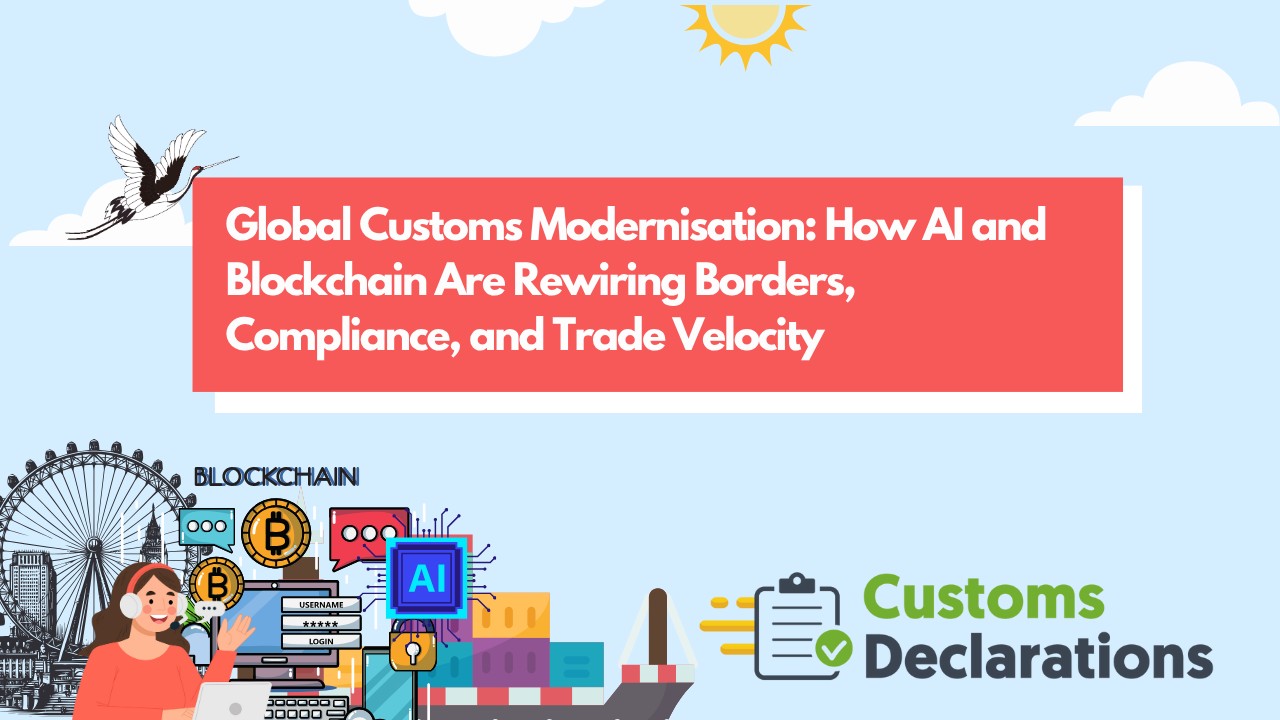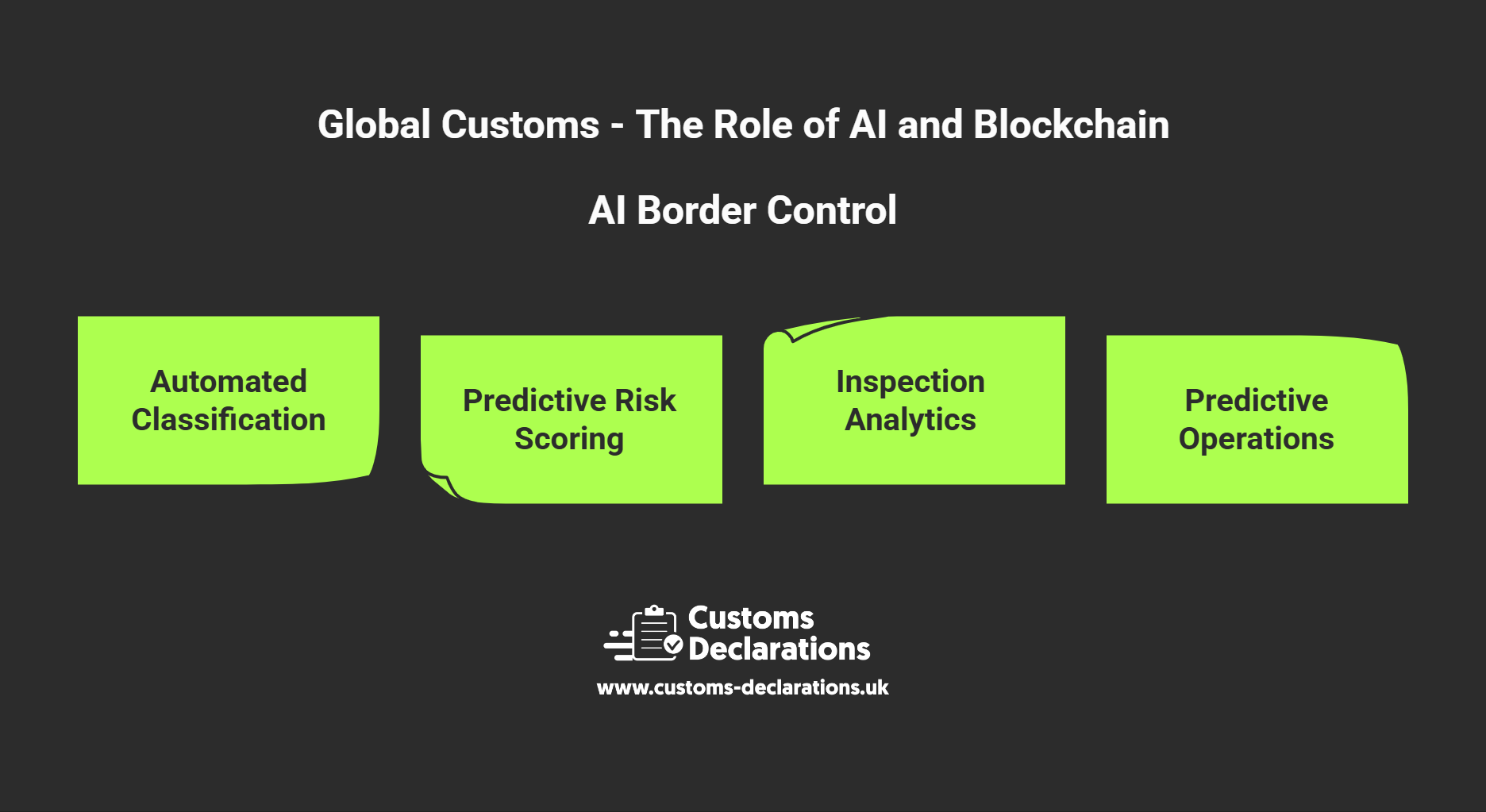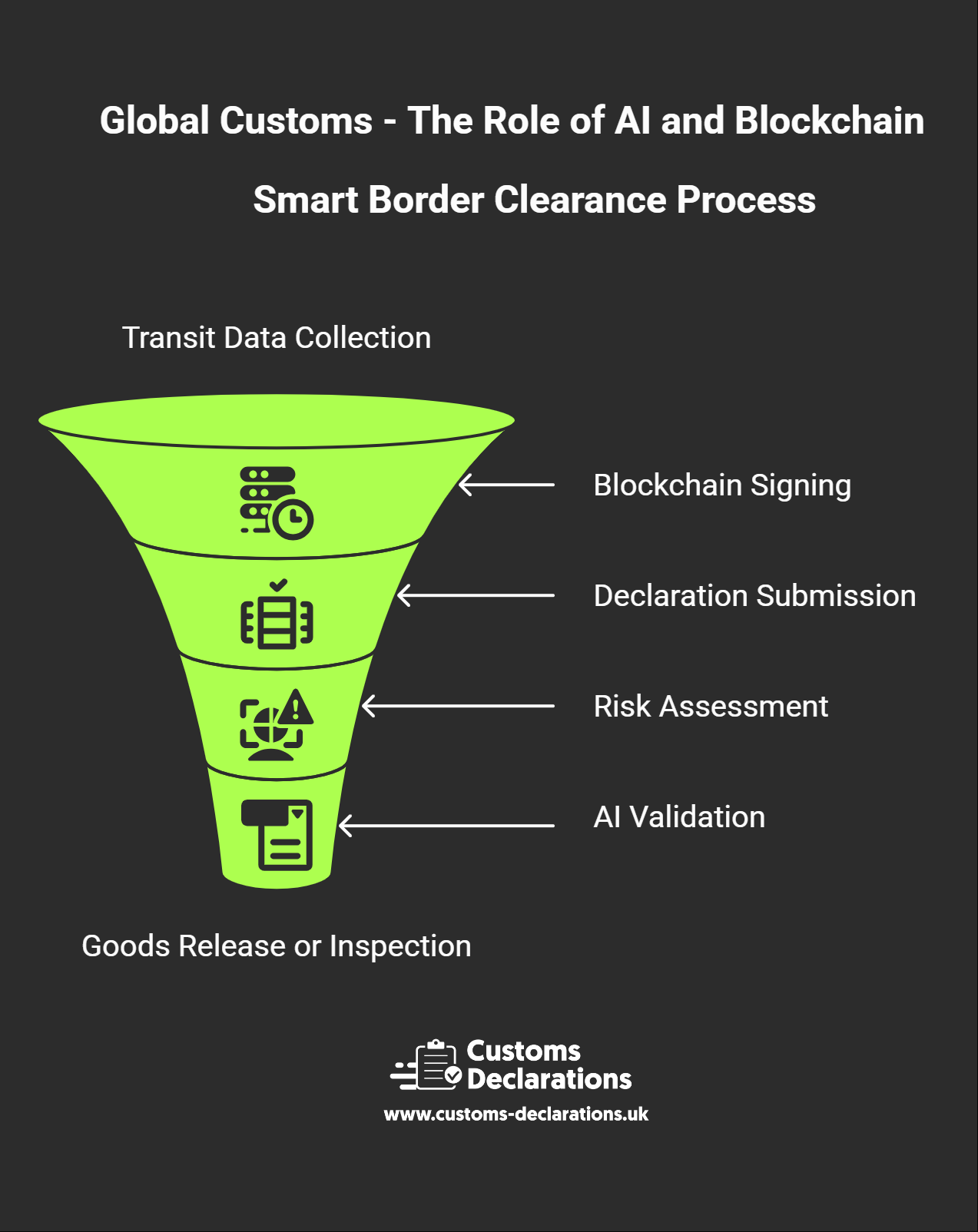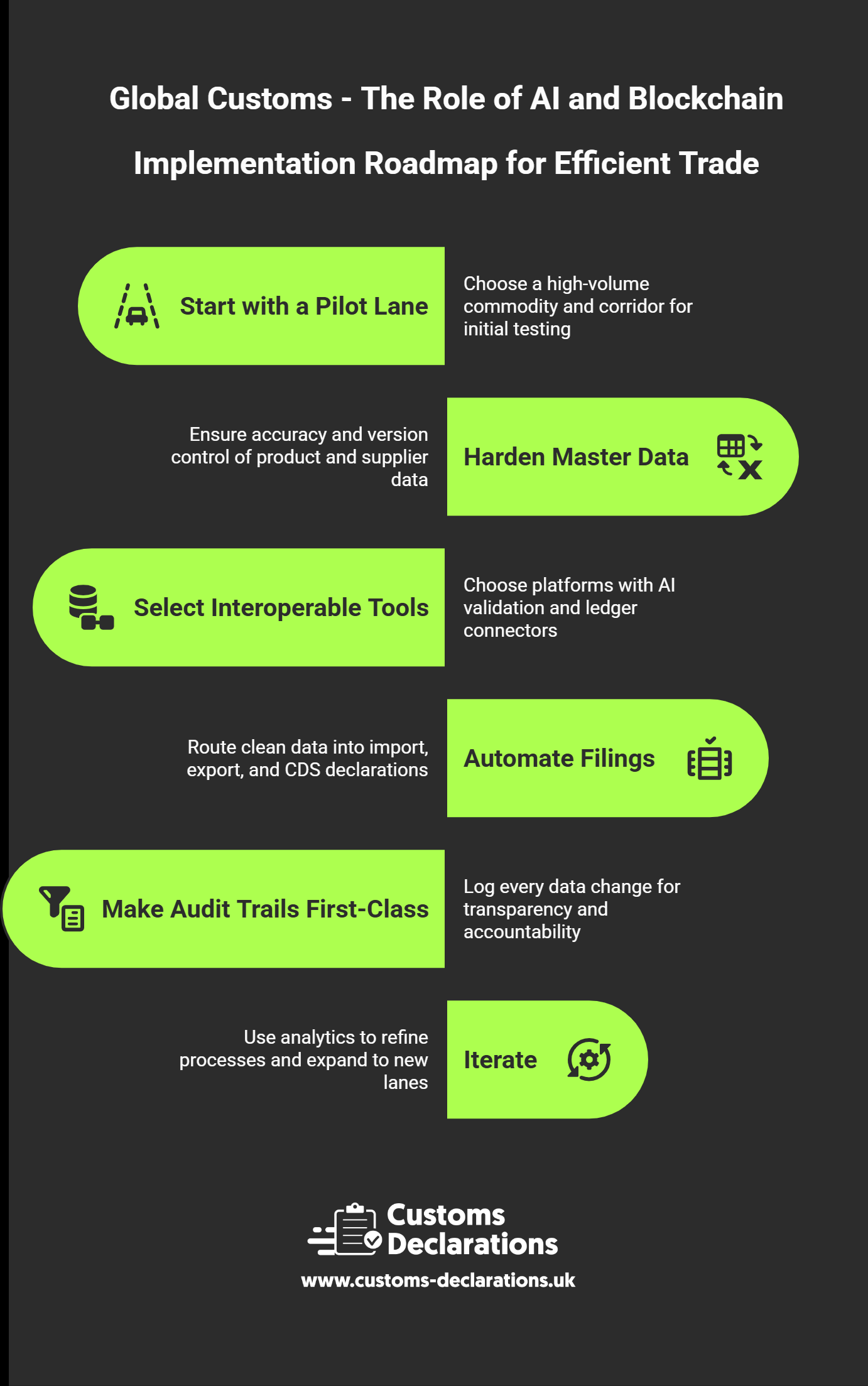Introduction: From Paper Borders to Intelligent, Trust-Based Gateways
Customs modernisation has moved from a worthy aspiration to an urgent operational necessity. Trade volumes continue to climb on the back of e-commerce and near-shoring, while geopolitical shocks, sanctions regimes, and stricter product standards multiply the data points a single shipment must carry. The twentieth-century border—paper forms, fragmented systems, manual triage—simply cannot cope. Around the world, administrations and traders are converging on two enabling technologies: artificial intelligence (AI) to interpret and act on vast flows of information in real time, and blockchain to anchor that information in tamper-evident, cross-border records of trust.
What makes this shift decisive is not any single gadget or pilot. It is the emergence of end-to-end digital corridors in which pre-lodged data, risk scores, and documentary proofs travel with the goods, allowing compliant consignments to clear in minutes while scarce human effort focuses on genuine anomalies. This comprehensive guide explores how AI and blockchain are being applied today, what is coming next, and how traders can prepare their operations—from import declarations and export declarations to ENS declarations—for borders that think and verify at machine speed.




